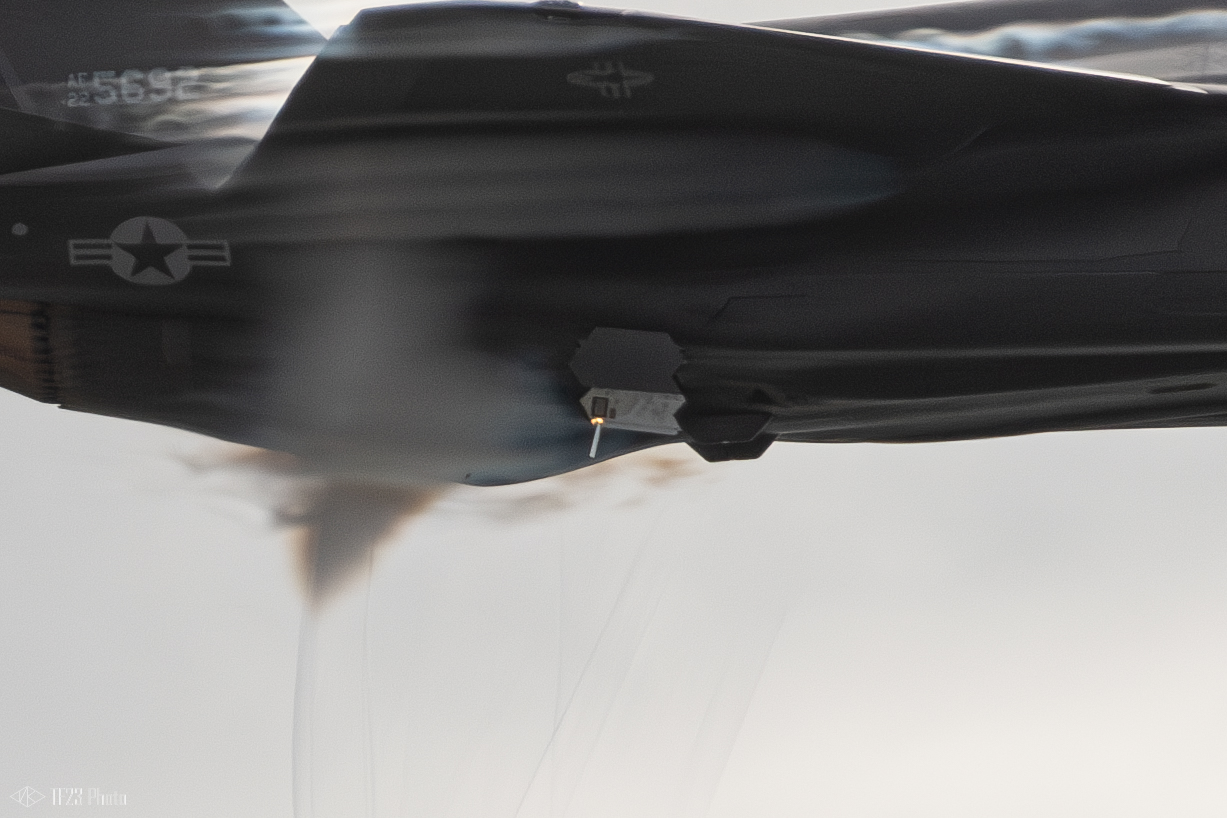Interesting how they're relying on a 50's era missile magnet to relay information between platforms. Makes you think...
You are using an out of date browser. It may not display this or other websites correctly.
You should upgrade or use an alternative browser.
You should upgrade or use an alternative browser.
While there is no doubt that, F-35 provides unmatched information superiority.
And it is also true that, "in modern war, information advantage is the #1 advantage that militaries seek to capture and exploit" however, information alone won't destroy the IADS. You would still need kinetic and electromagnetic 'effectors' or combination of both to physically supress/destroy the IADS.
Unlike Bekka valley SAM site or IRAQI IADS, Turkish future IADS is equipped with GaN based dual axis AESA sensors like these.
View attachment 60214
View attachment 60213
In this case, if we consider the scenarios carefully, we can see it would be very difficult to supress future Turkish IADS even with F-35s.
1. F-35 tries to jam the IADS sensors on its own. However, barracuda EW suit won't be able to jam long-range search radar (UMAR) or multi-functional fire control radar (ÇFAKR) even when utilizing the full power of APG-81 with narrow directed beam.
Because of the. Simple fact that, there is a massive difference between the size Antena array and power output.
Not to mentioned while trying to do that it would severely compromise the F-35's stealth and light it up like flash light in the middle of the dark.
On the other hand, deception jamming and in particular DRFM is simply not practical against modern AESA sensors.
2. Overwhelm the system with a combination of large numbers high-end low-end precision weapons like cruise missiles, anti radiation missiles along with JSOW and SDM, as it would be forced to runs out of interceptors.
In this case, shooting interceptors against high-end CM and anti radiation missiles is not uneconomical as they are meant to shoot them down.
However, the problem starts with low cost glide bombs that is launched in large numbers (a F-35 can carry 8x SDB while carrying 2x BVR missiles) with combination of high-end precision weapons.
But the good thing is, Turkish IADS would be layered with short range rapid response systems like Korkut/GURZ that can comfortably shoot down saturated slow flying glide bombs and decoys using low cost 35mm smart rounds.
View attachment 60215
View attachment 60216
Thus, SIPER/HISAR would be able to preserve its expensive interceptors against cheap glides bombs and decoys like SDB and MALD that F-35 likely to deploy.
3. Using AN/ALQ-249 next generation jammer mid-band (NGJ-MB).
View attachment 60217
IMO, its extraordinary power output likely to overwhelm the long-range search radar (UMAR) or multi-functional fire control radar ÇFAKR (Considering NGJ would be integrated with F-35 in the future, which seems unlikely at the time) However, even that would be highly complicated mission to execute as the Turkish IADS would consist of not one but multiple long-range search radars (UMAR) or multi-functional fire control radars (ÇFAKR) in any given sector.
And last but not the least, all of these above mentioned scenarios requires total freedom of maneuver and uncontested sky for adversary's Areal platforms even if it is a low observable one.
Unlike Iraq and Syria it simply won't happen with Türkiye. Specially when TurAF will be equipped with their own LO air superiority platform. (KAAN)
The information superiority WILL enable the F-35s to break through, not just once, but multiple times regularly. People like to think that because IADS is integrated among themselves, they're safe. Integration between air defense assets is a double edge sword, which the enemy will try to exploit, lose just one node, the effectiveness of the IADS will degrade and losing more nodes will force IADS to the point of irrelevance. This is what happened in Iraq, where steady losses of air defense nodes like radar overtime translate into blindness of tactical situation for Iraqi commanders on the ground.
Lets say you have an enemy IADS consisting of X numbers of radar, Y numbers of missile launchers, Z number of CIWS spread out among a N Km of land trying to protect an airspace you're trying to defend. To overwhelm this, you either go attack them all at once and spread thin, OR you can concentrate on one particular battery/site/node and overwhelm one.
Imagine an aerial version of the ground war's defeat in detail.
The F-35 is designed with an aerial application of defeat in detail in mind, with the F-35 advanced sensors like DAS and its RWR could detect then proceed to geolocate the site of IADS and gives the pilot themselves a complete picture of the threat environment. Its very advanced RWR will gave pilots coordinates on where the threatening radio frequency emission is coming from can be devised. Just a single F-35 is already dangerous enough, a flight of multiple F-35 will share whatever intelligence they absorb from their extensive passive sensors in a net of networked data link daisy chain-like directional, low-probability of intercept proprietary Multi-Function Data-Link (MADL). The Electronic Intelligence (ELINT) that flights of multiple F-35 soaks up allows F-35 pilots to see these "threat rings" in real time and they can choose to either avoid, engage, or electronically attack the source of those threat rings depending on where they and their fellow F-35s are located and what their mission is at hand.
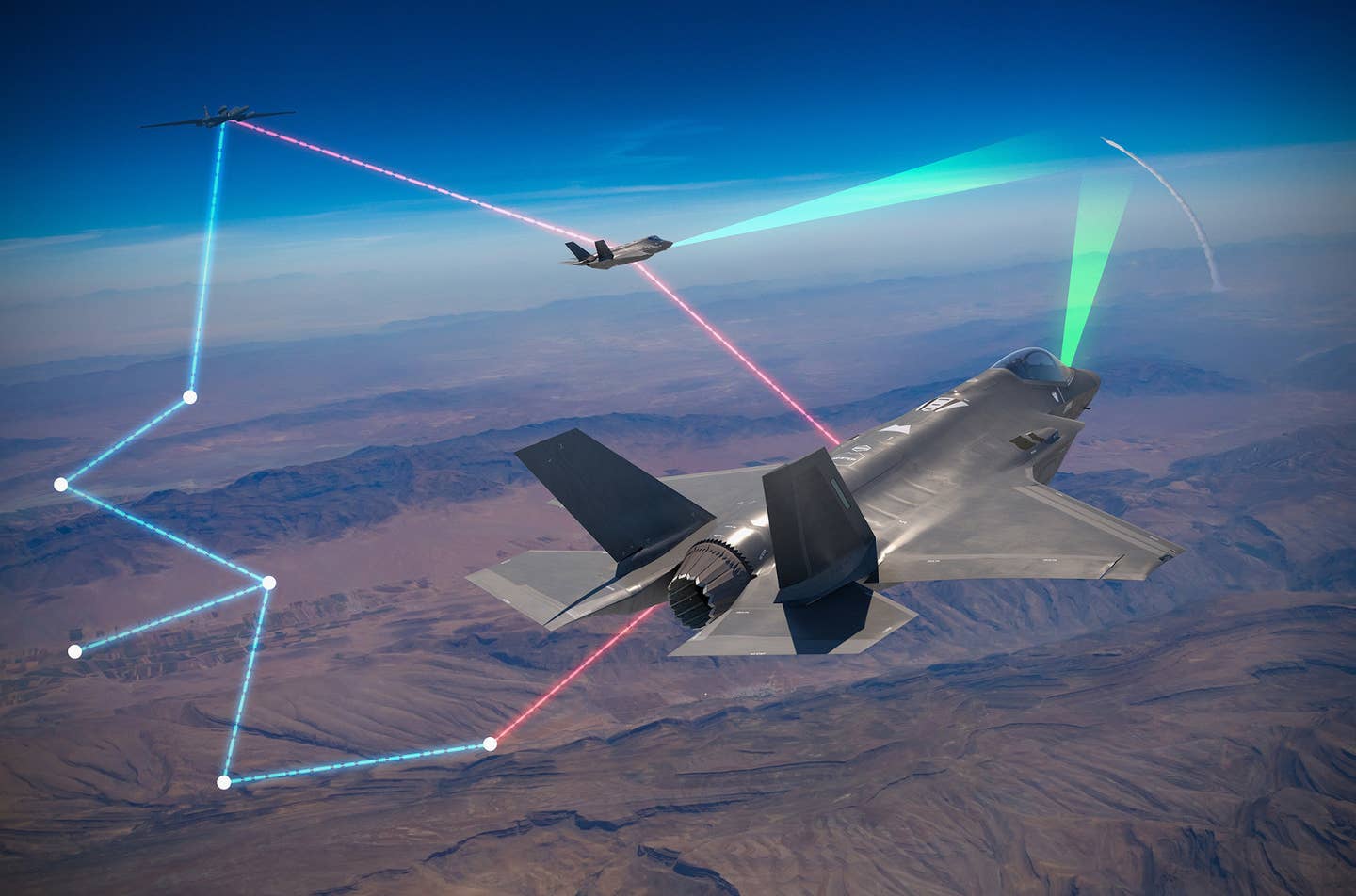
Anti air defense offensive missions are divided into two missions, they're either SEAD (Suppression of enemy AD) or DEAD (Destruction of enemy AD). This are not interchangeable. In SEAD you only need to force the enemy to shut down their air defense for a certain period of time either by kinetic actions or by the enemy's own willingness to reduce electronic emissions. In SEAD, even though the enemy air defense site is intact but forced to shut down due to other concerns, then that SEAD mission is a success.
The stress of uncertainty poured into the neck of an air defense commander by the mere reports/rumors/or guess of the F-35s flying around could force them to shut down entirely, and if they do, the F-35 wins for that day.
Then there's DEAD, which the F-35 could capitalize on its advanced situational awareness to plan and coordinate among the strike team on which site to defeat first. Those batteries they choose to engage will:
- Have difficulty detecting the F-35, long after the F-35 detects them (that's given)
- Will likely be overwhelmed by the sheer numbers of munitions dispensed. Please note that no air defense interceptor, CIWS have a 100% successful interception rate. There will be a number that will go through many or not many.
- Even depending of the numbers of equipment destroyed on ONE air defense site in ONE sortie, you need to put into mind that they will eventually come again and with the F-35 exceptional intelligence gathering capability you will find it difficult to justify normal dispersal and scooting techniques because they will eventually find you faster than you could relocate. The F-35 will give an up to date pictures to pilots operating around in real time.
So yes, I have full faith in the F-35 ability to wreck havoc on any air defense system out there. Off course the F-35 is not a silver bullet, but its just so massive the advantage that the F-35 could bring into the battlefield, and imo there's no real adequate answer to stealth and especially stealth + unmatched situational awareness
The F-35 against IADS will be a modern aerial version that of a fast moving Mongol cavalrymen with bows and spears circling around an encircled infantryman with swords.

Last edited:
Exceptional capabilities of the F-35 will revolutionize air dominance on a scale never seen before. In 2010, F-35 detected and tracked the launch of a rocket from 1300 km utilizing it's Distributed Aperture System.
Carrying the most modern ramjet BVR missile Meteor, it doesn't fuck around. Deadly!
That guys talking about turboprops (imported from US) gonna stand a chance against it. Funny!
is it really working? How did Russia beat Germany in being the 5th country with the highest PPP and have not started any major offensives yet with all the gathering going outside Ukraine's border?
View attachment 60220
detecting and tracking are two different things.
In the end he admitted his writing as guesses.
BALTIMORE, Sept. 7, 2010 -- Northrop Grumman Corporation's (NYSE:NOC) AN/AAQ-37 Electro-Optical Distributed Aperture System (DAS) for the F-35 Lightning II Joint Strike Fighter successfully detected and tracked a two-stage rocket launch at a distance exceeding 800 miles during a routine flight test conducted aboard the company's BAC 1-11 test bed aircraft.

Newsroom

Anti air defense offensive missions are divided into two missions, they're either SEAD (Suppression of enemy AD) or DEAD (Destruction of enemy AD). This are not interchangeable.
That’s right.
The stress of uncertainty poured into the neck of an air defense commander by the mere reports/rumors/or guess of the F-35s flying around could force them to shut down entirely,
That ain't happening with a SIPER battery Accompanied by SHORAD.
Then there's DEAD, which the F-35 could capitalize on its advanced situational awareness to plan and coordinate among the strike team on which site to defeat first. Those batteries they choose to engage will:
- Have difficulty detecting the F-35, long after the F-35 detects them (that's given)
- Will likely be overwhelmed by the sheer numbers of munitions dispensed. Please note that no air defense interceptor, CIWS have a 100% successful interception rate. There will be a number that will go through many or not many.
Looking at Ukraine war and patriot success i would say 95% success rate for modern western air defence systems. And CWIS capable of firing programmable ammunition will have 100% success rate against slow flying glide bombs if not against cruise missiles. (but of course, these are my subjective guesstimates)
Lets say you have an enemy IADS consisting of X numbers of radar, Y numbers of missile launchers, Z number of CIWS spread out among a N Km of land trying to protect an airspace you're trying to defend. To overwhelm this, you either go attack them all at once and spread thin, OR you can concentrate on one particular battery/site/node and overwhelm one.
I think you missed the point here. Yes, it is generally true that no air defence system is 100% successful, and it is possible to ultimately overwhelm an AD battery with enough concentration. But all of it requires total freedom of manoeuvre for the F-35. Which, IMO won’t happen with Turkish KAAN roaming around.
Anyway, let’s agree to disagree.
https://en.wikipedia.org/wiki/Star_tracker wouldn't really care if aircrafts have this if there is no convenience to use it.In the end he admitted his writing as guesses.
BALTIMORE, Sept. 7, 2010 -- Northrop Grumman Corporation's (NYSE:NOC) AN/AAQ-37 Electro-Optical Distributed Aperture System (DAS) for the F-35 Lightning II Joint Strike Fighter successfully detected and tracked a two-stage rocket launch at a distance exceeding 800 miles during a routine flight test conducted aboard the company's BAC 1-11 test bed aircraft.

Newsroom
news.northropgrumman.com
cover up for a fuck up or did it safely crash in the U.S. and it has not been compromised?
F-35A warplanes of the Norwegian Air Force took off and landed on the highway.

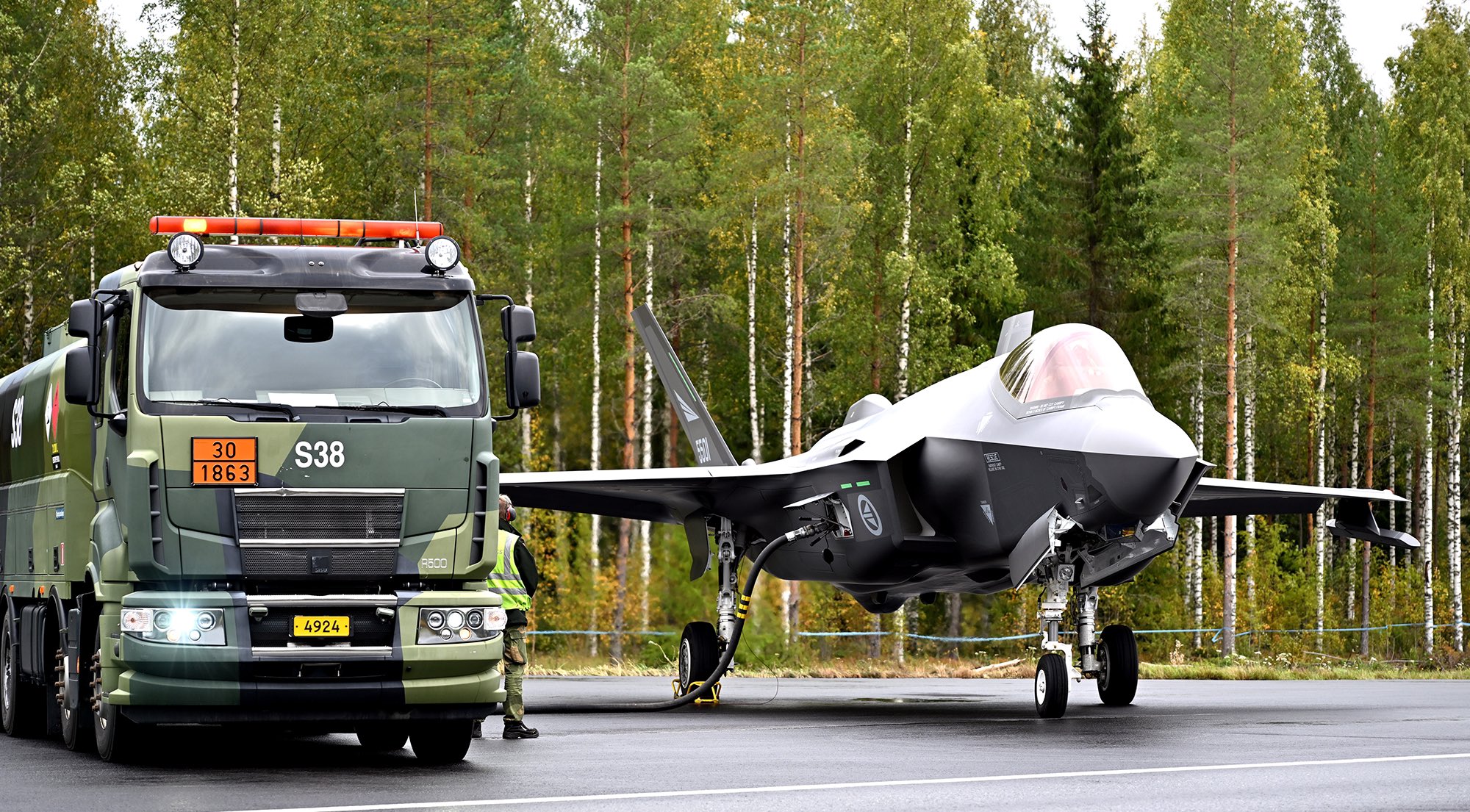
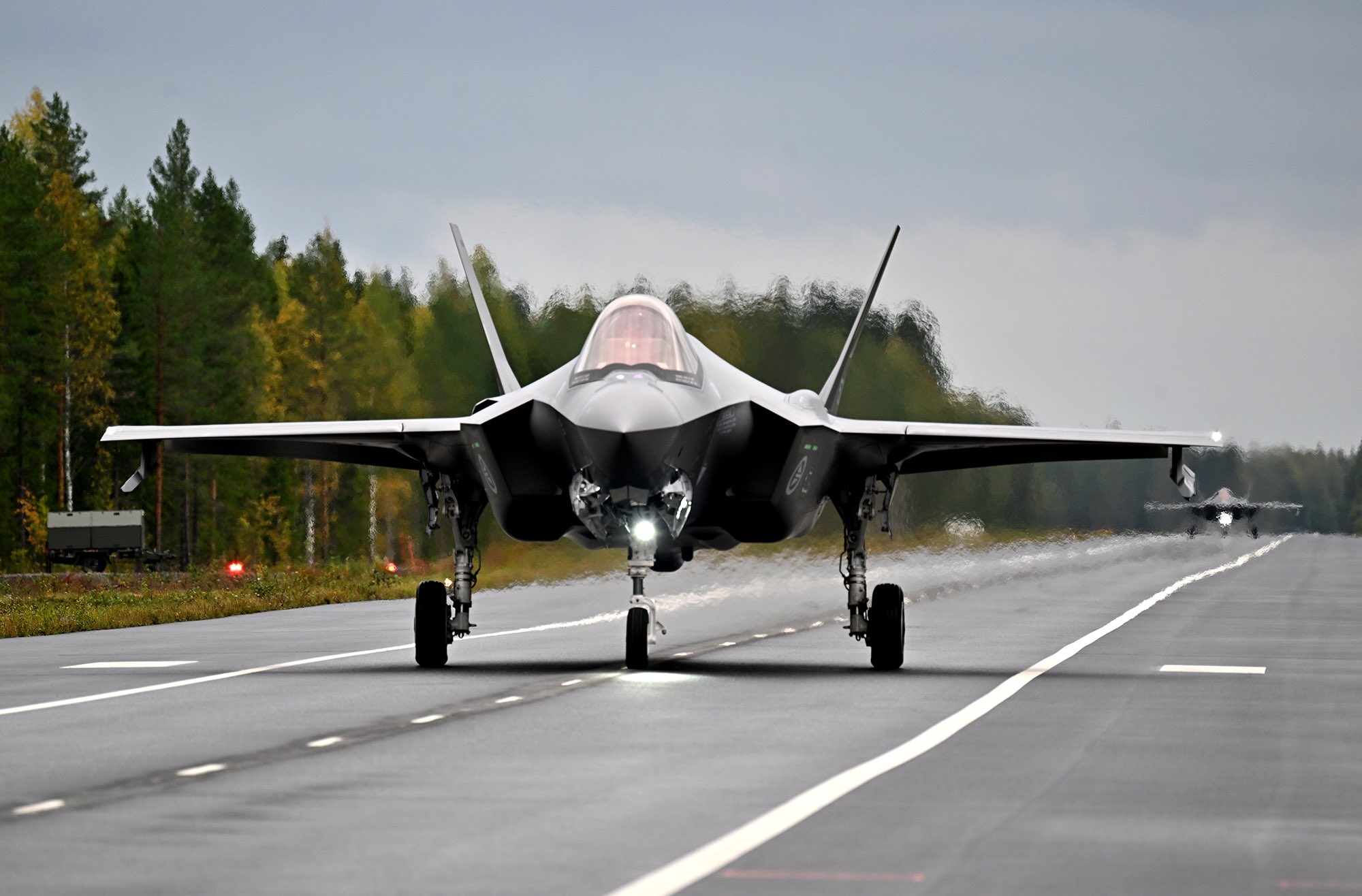
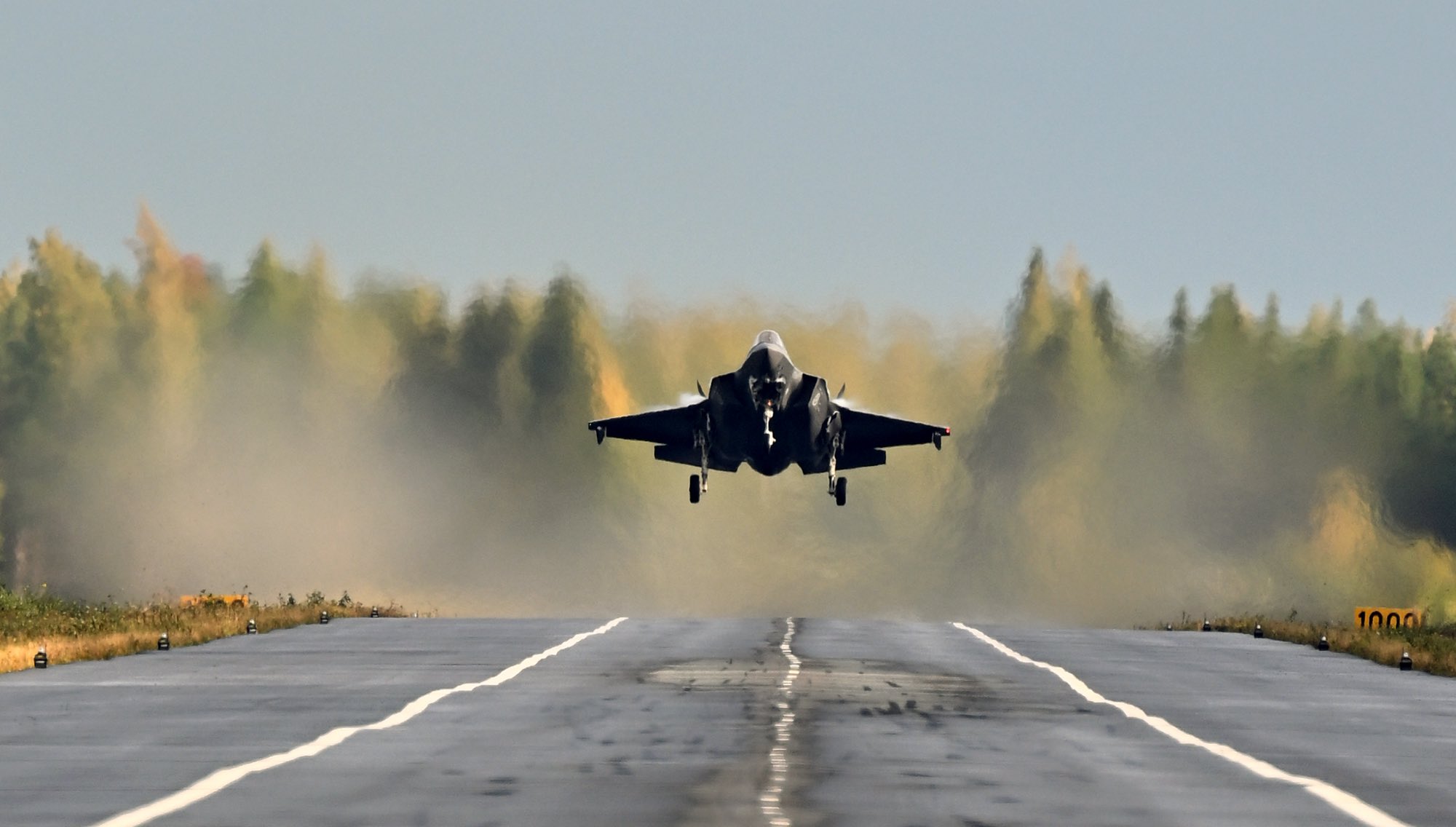
Last edited:
That's Norway's F-35 landing on Finnish roads.
F-35A warplanes of the Finnish Air Force took off and landed on the highway.




F-35C fighter-bombers recently delivered to the US Marine Corps have quality problems
Normally, of the 340 F-35C fighter-bombers that the Pentagon must order, a total of 67 must be assigned to the US Marine Corps [USMC], which is already implementing the F-35B, i.e. the short takeoff and vertical landing version [STOVL].The first USMC unit equipped with F-35Cs, Marine Attack Squadron 314 [VMA-314] was declared operational in July 2021. It must be followed by the VMA-311 “Tomcats”, reactivated in April 2023 on the base Miramar Naval Air Station, California. This squadron was able to begin its flight operations in September of the same year.
Last February, VMA-311 unintentionally made headlines after experiencing an incident with one of its F-35Cs. Returning from a mission, when it was stationary and its pilot had just left the cockpit, its landing gear suddenly retracted . If the extent of the damage has not been specified, it is possible that its electro-optical targeting system [EOTS for Electro-Optical Targeting System] may have suffered…
But, obviously, this incident is not an isolated case within VMA-311 “Tomcats”. This is in fact what his commander, Lieutenant-Colonel Michael Fisher, denounced in a memo addressed to his superiors, who validated it.
According to Defense News , which had access to this document, dated January 7, Lieutenant Colonel Fisher deplored the quality problems observed on the F-35Cs delivered directly to his squadron by Lockheed-Martin.
Thus, the fuel circuits of several devices had to be drained several times after the discovery of metal shavings and traces of Krytox [a high temperature lubricating grease] in the fuel. A plastic tool was even found in the wing structure of one of them.
But the list of grievances of the commander of VMA-311 does not end there: defective components are mentioned, such as electronic modules or even controllers of the power management system, a failure of the cockpit panoramic screen of one of the F-35Cs and seals installed incorrectly.
“The F-35's readiness continues to harm the Marine Corps and degrade our ability to be the nation's go-to force,” said Lt. Col. Fisher, who said the number of sorties lost due to failing components is “unacceptable”. Especially since these problems obviously created additional work [estimated at 700 hours] for the squadron's technicians.
That being said, the commander of VMA-311 is not only railing against these dysfunctions: he has also made proposals to remedy them, deeming it necessary, for example, to establish a direct line between the units accepting new F-35s. , the F-35 Program Office [JPO] and Lockheed-Martin. And added that the manufacturer must be “responsible for anomalies observed on aircraft during the acceptance process and functional in-flight verification”.
For its part, Lockheed-Martin said it was working in “close collaboration” with the USMC, the JPO and the Defense Contract Management Agency to “address the concerns raised” by Lieutenant-Colonel Fisher. “We are proud of the quality of the aircraft we deliver and evaluate all comments from our customers on the quality of production and the reliability of the parts,” assured the industrialist, in a statement sent to Defense News.

Des chasseurs-bombardiers F-35C récemment livrés à l'US Marine Corps ont des problèmes de qualité - Zone Militaire
Normalement, sur les 340 chasseurs-bombardiers F-35C que doit commander le Pentagone, au total, 67 doivent être affectés à l'US Marine Corps , qui met
 www.opex360.com
www.opex360.com

F-35 Sustainment: Costs Continue to Rise While Planned Use and Availability Have Decreased
The F-35 aircraft is DOD's most advanced and costly weapon system. DOD currently has about 630 F-35s, plans to buy about 1,800 more, and intends to...
Fast Facts
The F-35 aircraft is DOD's most advanced and costly weapon system. DOD currently has about 630 F-35s, plans to buy about 1,800 more, and intends to use them through 2088.
We reported in this Q&A that DOD's projected costs to sustain the F-35 fleet keep increasing—from $1.1 trillion in 2018 to $1.58 trillion in 2023. Yet DOD plans to fly the F-35 less than originally estimated, partly because of reliability issues with the aircraft. The F-35's ability to perform its mission has also trended downward over the past 5 years.
F-35 is indeed an expensive aircraft. But the below calculation is mind boggling: You would spend $360 million per F-35 for a lifetime. You effectively need two aircraft to undertake any mission since per F-35 has only 50% mission capable rate.
F-35 Sustainment: Costs Continue to Rise While Planned Use and Availability Have Decreased
The F-35 aircraft is DOD's most advanced and costly weapon system. DOD currently has about 630 F-35s, plans to buy about 1,800 more, and intends to...www.gao.gov
Fast Facts
The F-35 aircraft is DOD's most advanced and costly weapon system. DOD currently has about 630 F-35s, plans to buy about 1,800 more, and intends to use them through 2088.
We reported in this Q&A that DOD's projected costs to sustain the F-35 fleet keep increasing—from $1.1 trillion in 2018 to $1.58 trillion in 2023. Yet DOD plans to fly the F-35 less than originally estimated, partly because of reliability issues with the aircraft. The F-35's ability to perform its mission has also trended downward over the past 5 years.
Full-mission capable rate is even lower, around 28%. So you need four units of F-35 for a successful mission. “In essence you are spending $1.4bn for each mission capable F-35” says Dr. T.X. Hammes in an interview with @RichOutzen on the Defense Journal.
The solution? Using stealth jet drones, which Turkish drone magnate Baykar aims to produce

F-35 is indeed an expensive aircraft. But the below calculation is mind boggling: You would spend $360 million per F-35 for a lifetime. You effectively need two aircraft to undertake any mission since per F-35 has only 50% mission capable rate.
Full-mission capable rate is even lower, around 28%. So you need four units of F-35 for a successful mission. “In essence you are spending $1.4bn for each mission capable F-35” says Dr. T.X. Hammes in an interview with @RichOutzen on the Defense Journal.
The solution? Using stealth jet drones, which Turkish drone magnate Baykar aims to produce

Given JSF has achieved full rate production only this year, I think Within next 5/6 years by 2030 they will probably achieve full range of mission readiness for 50% aircrafts in the fleet. That would be good enough.
Last edited:
Related:F-35 is indeed an expensive aircraft. But the below calculation is mind boggling: You would spend $360 million per F-35 for a lifetime. You effectively need two aircraft to undertake any mission since per F-35 has only 50% mission capable rate.
Full-mission capable rate is even lower, around 28%. So you need four units of F-35 for a successful mission. “In essence you are spending $1.4bn for each mission capable F-35” says Dr. T.X. Hammes in an interview with @RichOutzen on the Defense Journal.
The solution? Using stealth jet drones, which Turkish drone magnate Baykar aims to produce

Costin1984
Active member
Romania is the newest operator of F35.....according to Government sources,the total bill will be less than 7.2 billions,around 6.5,including weapons
Typical Yankees, mobsters!F-35: How to get rid of the American trap?
Very interesting






